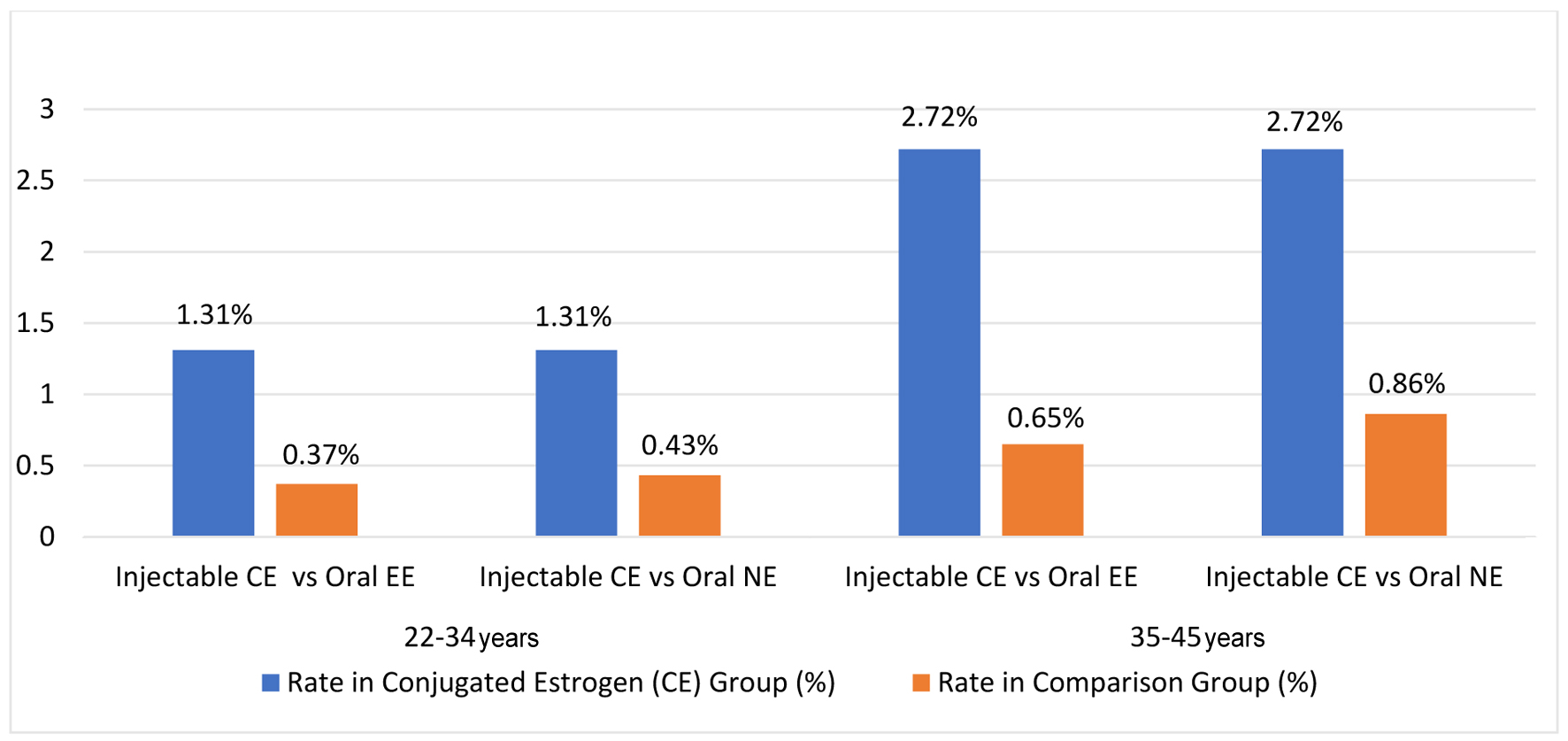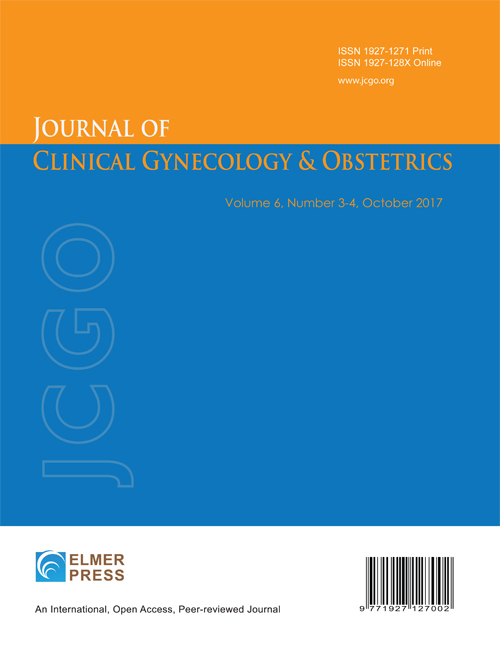Intravenous Estrogen for Acute Heavy Menstrual Bleeding: Commentary and Database Analysis
DOI:
https://doi.org/10.14740/jcgo1025Keywords:
Intravenous estrogen, Conjugated estrogen, Thrombosis, Venous thromboembolism, Heavy menstrual bleedingAbstract
Background: Heavy menstrual bleeding (HMB) is common. Although hormonal medication is the mainstay of treatment, there is no scientific evidence to support the superiority of one regimen over another. Both oral and intravenous (IV) forms of estrogen are used for HMB in the acute setting and are known to be associated with thrombosis, in particular, venous thromboembolism (VTE) in the deep veins of the legs or pulmonary vessels. Progestins are also used for treatment of HMB; a common choice is norethindrone acetate, a small amount of which is metabolically converted to ethinyl estradiol (an estrogen) after ingestion. We sought to assess the incidence and relative risk (RR) of VTE for users of IV estrogen, oral ethinyl estradiol, and norethindrone acetate.
Methods and Results: A retrospective descriptive review of a large de-identified database (TriNETX, LLC) revealed a significantly higher calculated rate and RR of VTE amongst users of injectable conjugated estrogen compared to users of oral ethinyl estradiol and oral norethindrone acetate.
Conclusion: Research is needed to determine the true RR of thrombosis for IV estrogen users to allow clinicians and patients to make informed decisions that appropriately stratify risks and benefits when considering the options for hormonal treatment of acute HMB.

Published
Issue
Section
License
Copyright (c) 2025 The authors

This work is licensed under a Creative Commons Attribution-NonCommercial 4.0 International License.







